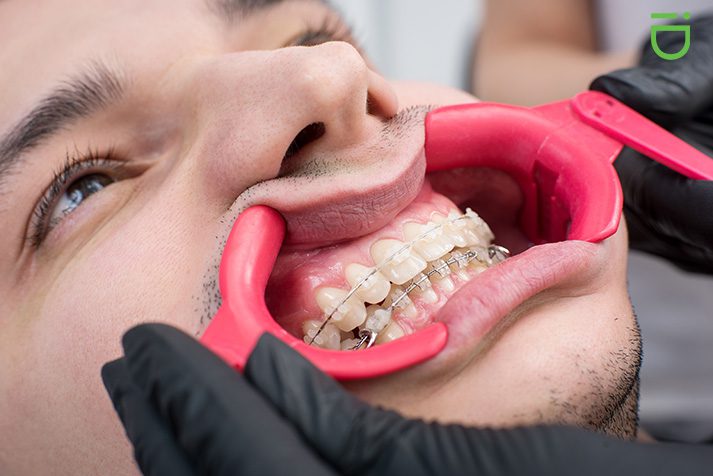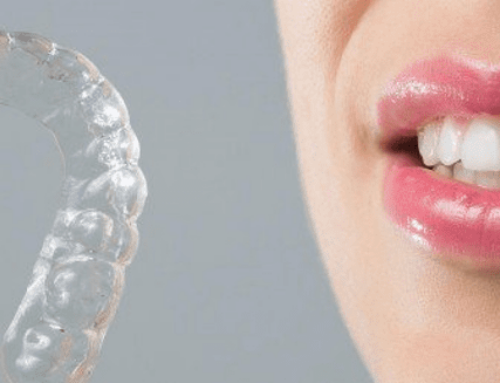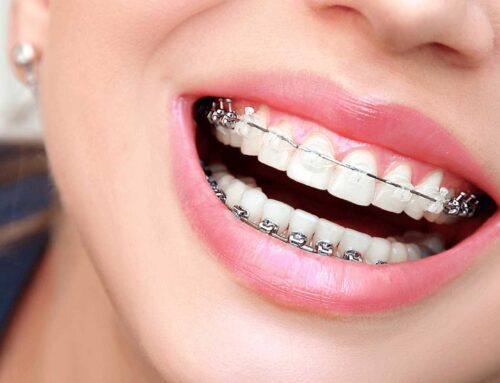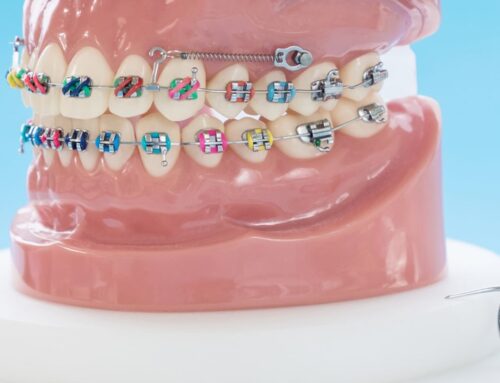The Pros and Cons of Ceramic Braces
Once upon a time, orthodontists seldom uttered the words braces and options in the same breath. If your teeth had to be straightened, you didn’t have much choice in how it would look. Braces were made of metal and that was all there was to it.
Today, thank goodness, you do have options. Dental technology has advanced to the point where braces are much less obvious–and at times barely noticeable. But are they better than traditional metal braces?
Let’s examine both the advantages and disadvantages of ceramic braces to help you make a better-informed choice. If you’re thinking of braces, this article should help you decide which option you want to go with.
Ceramic Braces in a Nutshell
On the structural level, ceramic braces are remarkably like metal braces. Both approaches involve bonding brackets to your teeth, and those brackets hold the wires that straighten your teeth in place. The big difference is in the bracket itself. Instead of metal, ceramic braces are made of–you guessed it–ceramics. And these braces come in a wide range of colours, including clear and tooth coloured.
The obvious advantage of choosing ceramic braces is that they’re less noticeable. The main reason most people choose to get braces is to eventually have a more attractive smile, but the actual process of wearing them can make even the most confident among us self-conscious. Ceramic braces are less visible, leading to fewer moments of awkward embarrassment for the patient.
But ceramics aren’t without their drawbacks. An informed decision means considering all the factors involved–including effectiveness, price, how they feel–and not just how good they look.
The Pros of Ceramic Braces
There are several reasons to choose ceramic braces. Chief among them are:
Aesthetic appeal
Ceramic braces look so discreet, many people won’t even notice you’re wearing them. This aspect makes them a popular choice for adults who didn’t have a chance to get their teeth properly aligned when they were younger. To make the braces even more unobtrusive, the wire that threads through the brackets also comes in tooth colour. When you consider that teeth are a top physical trait insecurity trigger, second only to weight, it is no wonder that less conspicuous braces are so appealing to so many.
Less pain
Patients find that ceramic braces are more comfortable than metal braces. They’re made of non-abrasive/non-reactive materials that won’t irritate your gums or the inside of your cheeks the way metal braces can. Many find that after two to four weeks wearing ceramic braces there is no discomfort whatsoever.
Very durable
Some people have heard that ceramic braces aren’t as sturdy as metal braces. They worry that the brackets are likely to crack and break and will need to be replaced periodically throughout the treatment. But that is usually an unfounded concern. Ceramics are technically less durable than metal braces, but they’re durable enough to serve as a one-and-done solution for most patients.
Cost-effective
While ceramic braces cost a little more than metal braces, they’re still cheaper compared to clear aligners. Also, ceramic braces get the job done quicker than invisible aligners can.
More colours
Metal braces come in two flavours (if you’re lucky)–dull gray or metallic silver. But ceramic braces are available in a wide array of colours for those who want to make a statement with their braces. Get brackets in your favourite colour and accessorize accordingly.
Less disruptive
Metal braces can cause a signal disruption that interferes with imaging tests. The less reactive material used in ceramic braces is much less disruptive.
The Cons of Ceramic Braces
There are also several reasons you might opt for good old-fashioned metal braces instead. These include:
Cost-effective, but only to a point
For the budget-conscious patient, metal braces are less expensive. Ceramics are made from higher quality materials, which in turn, drives up cost. Also, as we will see in the next point, they take longer to align your teeth, which could result in more visits to your orthodontist.
Move teeth slower
Ceramic braces gently realign your teeth in comparison to metal braces. But this also means that they typically take longer to nudge everything back into place. It can also mean that they’re less effective in cases with dramatic structural concerns.
Bigger brackets
Although today’s dental brackets are smaller than they used to be, ceramic braces tend to be bigger than their metal counterparts. While their less obvious colouring usually helps compensate for this fact, for some it is a deal breaker.
Possible staining
The material used for the ceramic brackets are made from polycrystalline ceramic which won’t stain easily, however it is possible if you aren’t taking proper care of them – i.e. making sure you brush after every meal. If you like things such as red wine, coffee, tea – be sure to brush thoroughly afterwards – or avoid these types of beverages.
Ceramic braces also use clear ligature ties to hold the wire to the bracket – and these can also become stained, if the staining is severe, you’ll need to see your orthodontist to have them changed out – which isn’t a big deal, but is something to consider.
May cause gum sensitivity
Due to their larger size (see above), it can be more difficult to brush around your brackets. This could lead to either swollen or receding gums. This is something your orthodontist will keep an eye on.
Ceramics up top
Because ceramic braces are a little less resilient to the stresses of pressure there is a chance the brackets could break or chip. For this reason, orthodontists tend to only recommend ceramic braces on the top set of teeth. The top teeth don’t strain as much when you chew. Putting ceramics on the bottom teeth only increases their chance of being damaged.
This is something that would be discussed and determined in your initial ortho consultation.
Are You a Good Candidate for Ceramic Braces?
Good candidates for ceramic braces have had all their adult teeth grow in and their bodies have pretty much stopped growing. This helps to ensure that there will be less chance of broken brackets during your treatment caused by drastic teeth movements.
And ceramic braces are great if you don’t want to attract too much attention to yourself. Thanks to their subtlety, ceramic braces are the ideal choice for patients with a full-time job or living on their own while they study at university or college. They just help make you feel less self-conscious – even if you’re not normally insecure.
Ceramic Braces – The Bottom Line
Today, you have some very real options when it comes to getting braces, and it’s best to know what you’re getting yourself into before you have your first visit with your orthodontist.
Ceramic braces are a lot more aesthetically pleasing than other options, aside from perhaps Invisalign trays, and most patients find them to be more comfortable and less painful. They’re sturdy and durable enough for most people, and they’re less expensive and faster than Invisalign braces.
Braces are a pretty big deal when it comes to your oral health, so make sure that you have gone to see an experienced, reputable orthodontist before making any decisions to alter your smile.
Book a Free, No-obligation Orthodontics Consultation Today
If you’re considering braces, be it ceramic, metal or Invisalign trays, come into Georgian Dental® and meet your new orthodontist. Realigning your smile is something you only do once, so you need to know all your options and have an opportunity ask questions.
We’d love to help you figure out the solution that’s right for you.
Appointment Request
If you’re interested in any of our procedures, and would like to meet with one of our dentists to discuss options, costs and get additional information, complete this short form and we’ll give you a call to arrange for a no-obligation appointment at our Barrie clinic.










